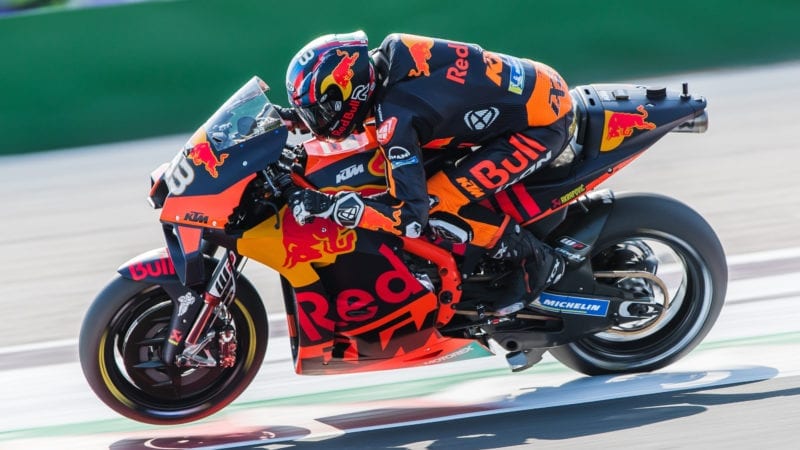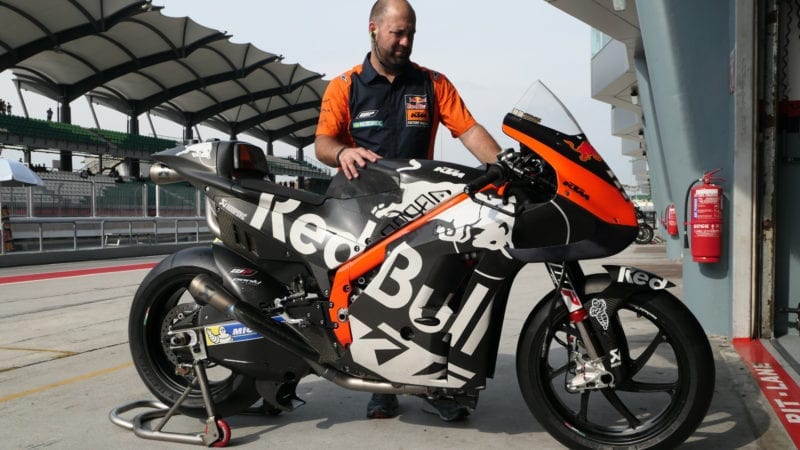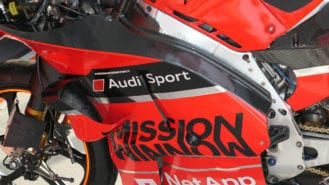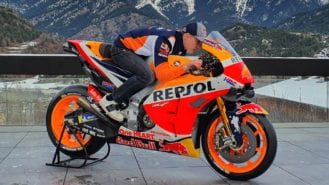But Risse insists that outright horsepower isn’t the most crucial factor in straight-line speed, because every bike on the MotoGP grid has more horsepower than it can use until it reaches fifth or sixth gear.
“To make the lap time you don’t need all the horsepower,” says Risse, who worked with KTM riders in the German superbike series before moving into Moto3 and then MotoGP. “What the riders describe when they are talking about the acceleration phase is the engine feeling, not the outright power, because usually we can give them more power.
“During the practice sessions we go up and down the torque map and traction-control map until we find the optimum, which means if we give more torque it doesn’t help and if we give less torque it doesn’t help, so torque isn’t the limit anymore. The limit is the physics in terms of grip and in terms of the wheelie limit.”
But Risse believes the biggest determinant in the initial acceleration phase isn’t the engine or electronics, but the rider.
“When we really look into the details the biggest factor is how the rider prepares the line and the moment he picks up the bike – that’s what makes you strong on the exit.”
And making the correct tyre choice, of course. MotoGP’s spec Michelin tyres work over a narrow operating range, which can make things very tricky during race weekends.
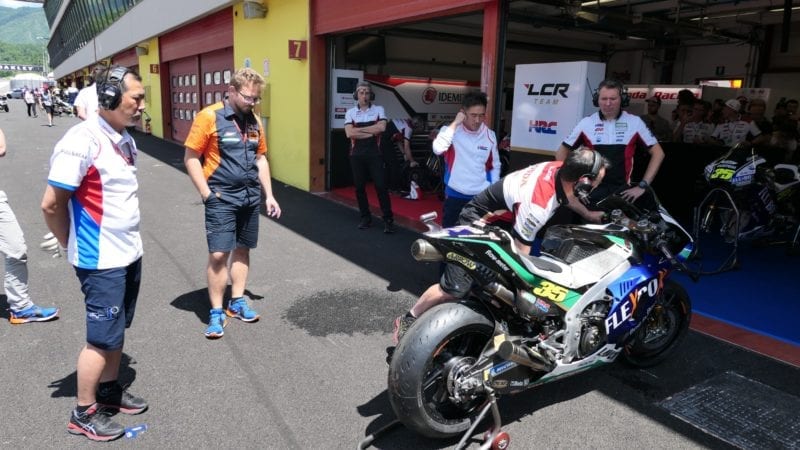
RC16 project leader Sebastian Risse (orange/blue top) checks out Honda’s RC213V
Mat Oxley
“The Michelins have a certain working window and they work really well in that window and there’s normally enough different tyre specs available to cover quite a wide range, so usually it’s not a problem to find tyres that work,” Risse adds. “What does make it tricky is when only one tyre spec works, so you have to manage the whole weekend with that spec, so the rider will have to spend quite a lot of time on the tyres that aren’t working so well and still try to get the best out of the bike in terms of doing set-up work and getting ready for the race.
“The situation is always different according to the tyre allocation. I think people can see this from the outside, but the more we look into the details the less clear this pattern is!”
Espargaró, who joins Repsol Honda this year, has a clear idea of what KTM must do to challenge for the 2021 MotoGP title.
“Consistency from one track to the next was very difficult to have with the bike, because the bike was super-sensitive to temperature changes,” says the 29-year-old Spaniard who scored five podiums last year, but never won a race, unlike fellow RC16 riders Brad Binder and Miguel Oliveira.
